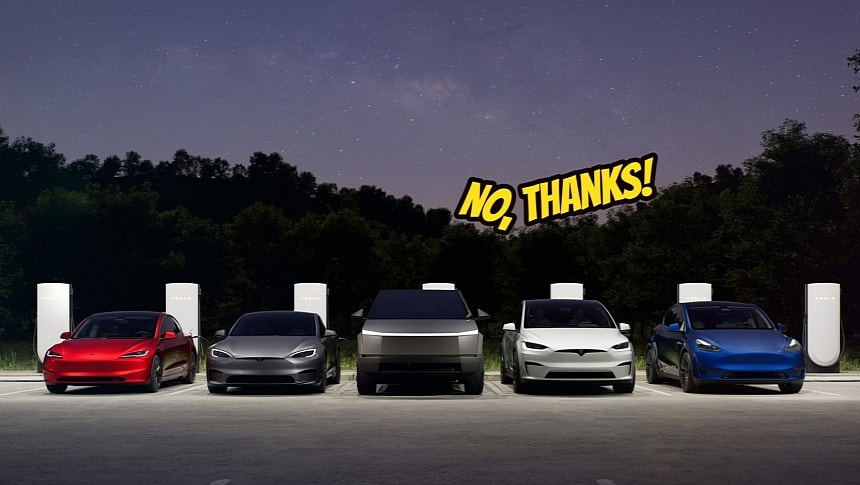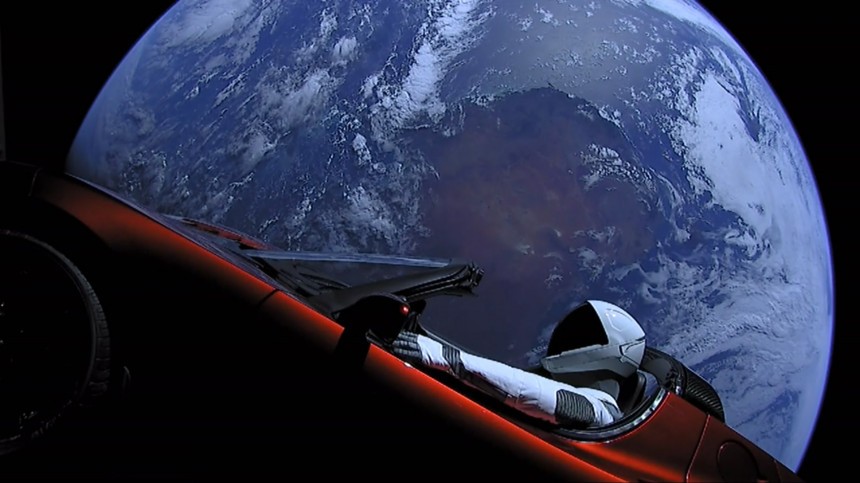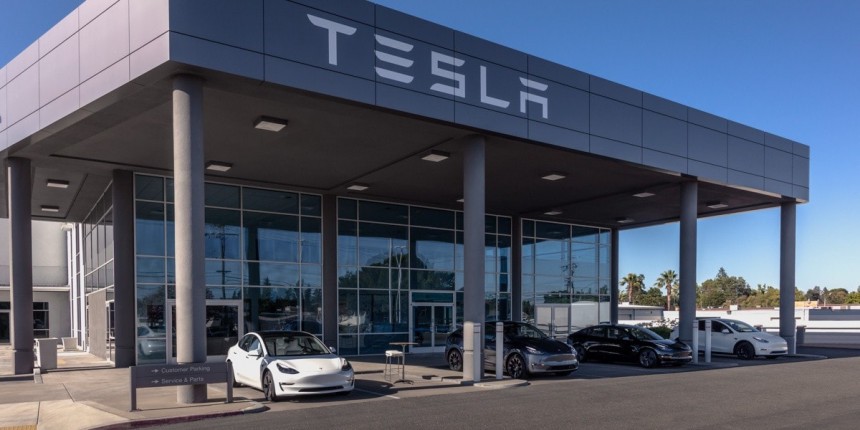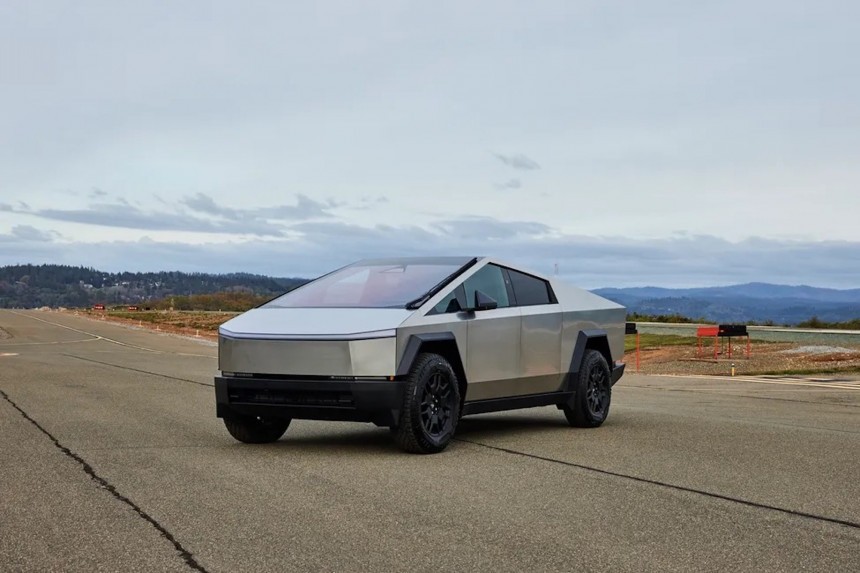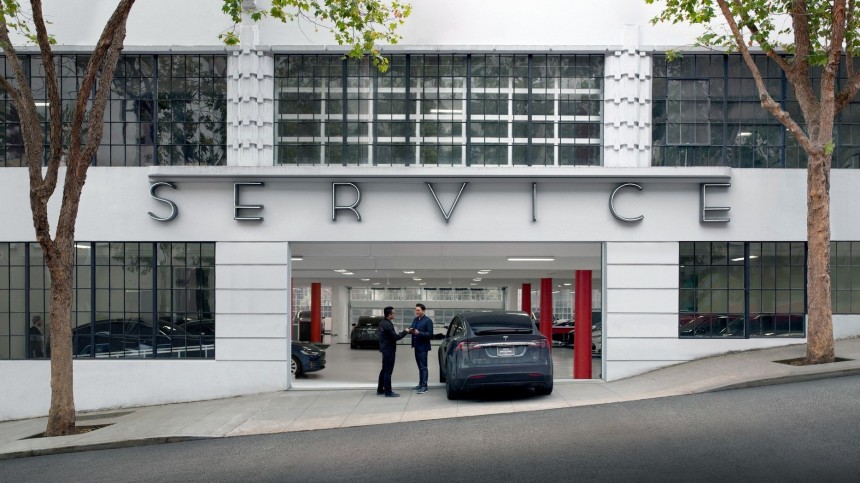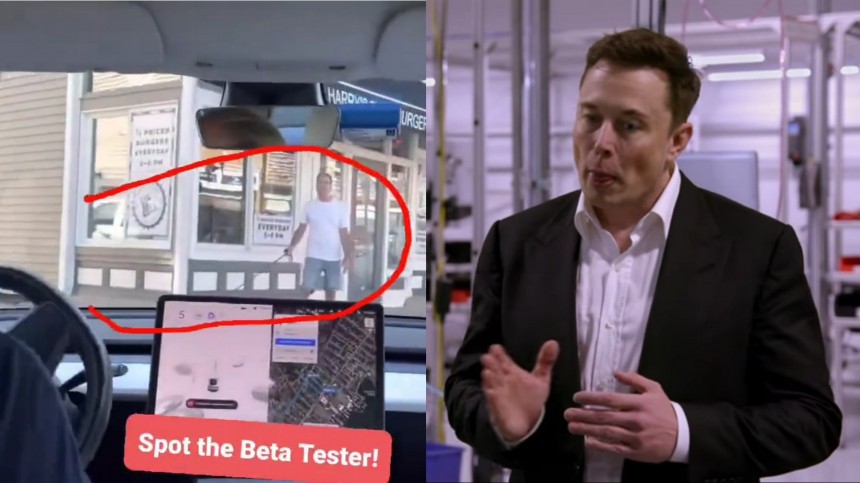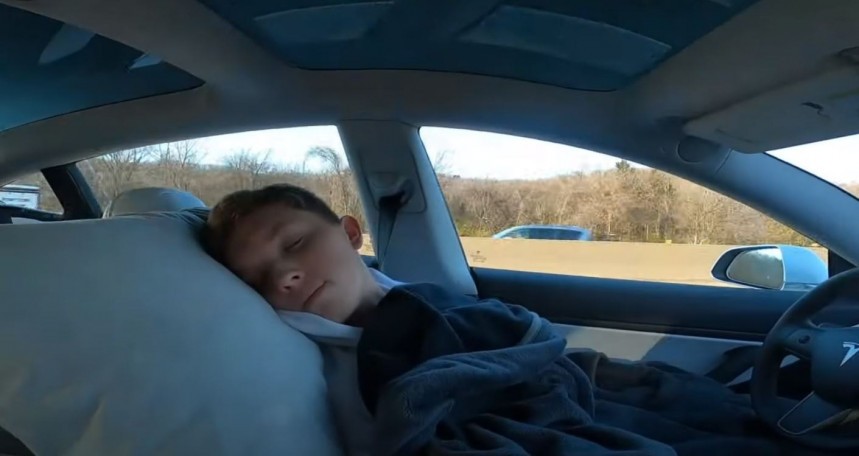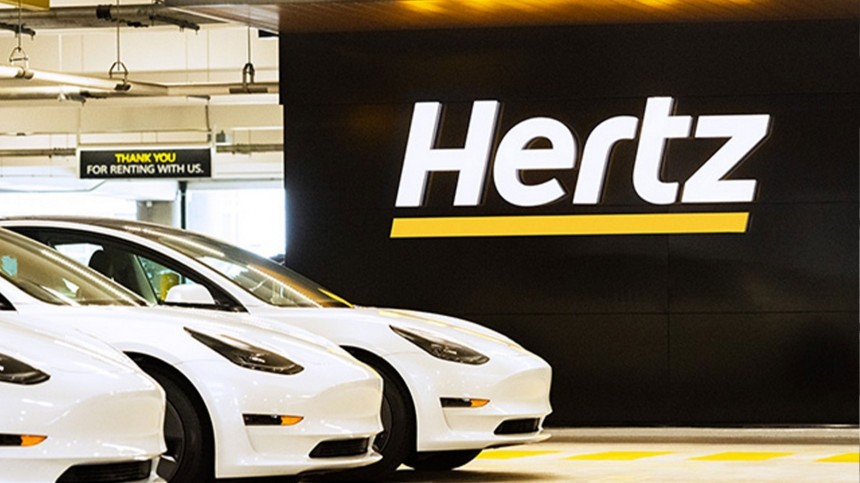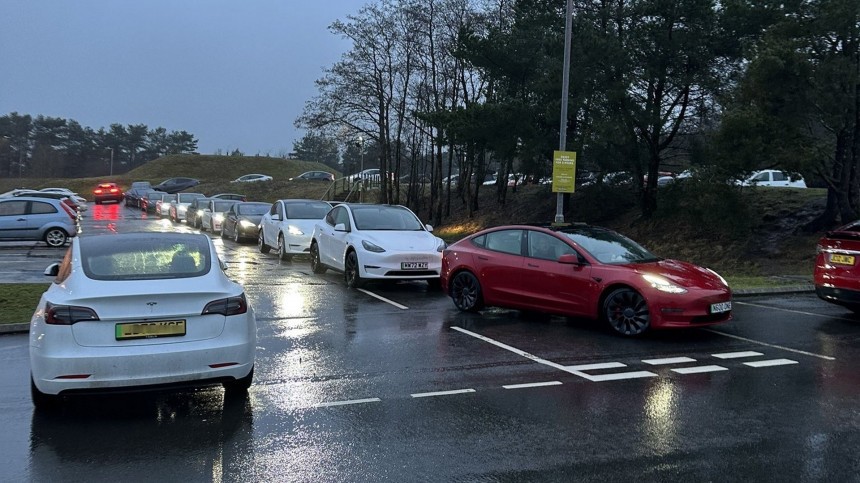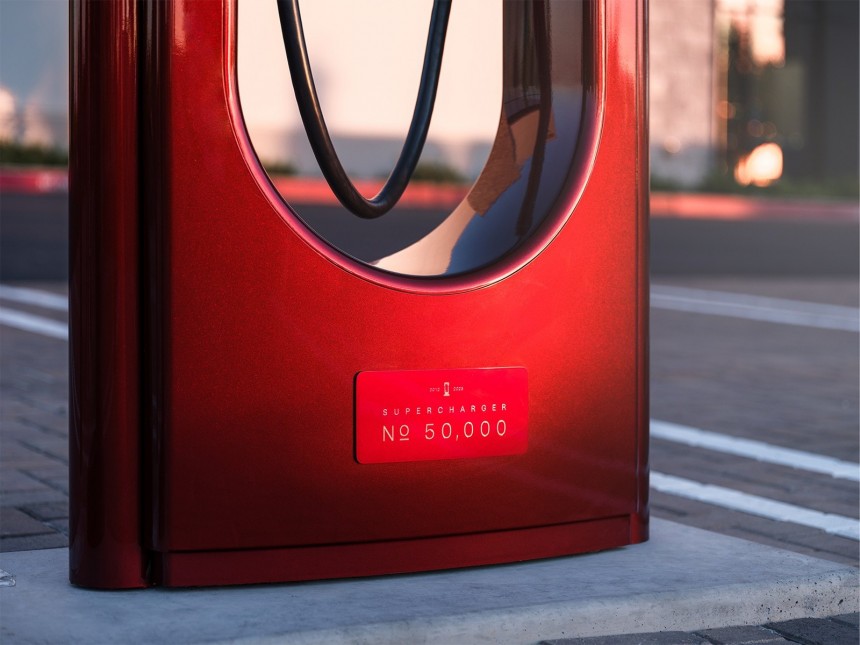If you need a car, be it used or new, and you want it to be battery-electric, there are more interesting options out there than what Tesla currently sells. Here's why I actively avoid what the world's most valuable automaker has in store and recommend you do the same for the time being.
I have followed Tesla's journey since its earliest days. I have been a fan of the company ever since Toyota forced its hand to become a publicly traded company, and Mercedes-Benz parent company Daimler helped it survive by buying a 10% stake. Sadly, that jovial and full-of-hope Tesla doesn't exist anymore. It is my understanding that this important automaker is now all about profit margins.
There was a time when I believed that carmakers wouldn't do what was necessary to combat global warming. Why would they spend money for the greater good, right? After all, it wasn't just them who were net contributors to the many nasty gasses in our atmosphere. It was a whole network of oil companies, freight operators, plastic producers, and other big players who strived to do as little as possible for the environment for maximum shareholder satisfaction.
Even so, we must acknowledge that transportation plays a big role in the greenhouse gas emissions game. Personal cars don't carry so much blame globally as you might think, but a change is needed. The bottom line is that we need to reduce CO2 emissions, which won't happen if we keep enjoying gas guzzlers and supporting OPEC's way of doing business.
Tesla appeared as a beacon of hope. The Lotus Elise-inspired Roadster and the Model S, which reminded many of Mazda's Mazda6, proved that you can give up on controlled explosions for personal mobility. They weren't much, but those two EVs were an honest attempt at ditching gas for good. They showed that it can be achieved. You can live a life where the gas station loses all its meaning.
But things didn't go very well. Tesla was very close to bankruptcy on a couple of occasions. Fortunately, it thrived. At first, it got help from early adopters who wanted the rewards and recommended Tesla's pricey rides to their peers. The novelty factor also helped. You didn't have to deal with dealerships, and the idea that the car could be charged at home intrigued many.
Then, the Model 3 and Model Y helped the brand expand even more. Those two were what the marque needed. Eventually, Tesla gave up on its amazing referral programs and achieved net profitability in 2020. The journey culminated last year, with the Model Y becoming the world's best-selling car. An affordable, efficient, and spacious crossover with enough range to commute (on average) for a week without charging was always going to become a sales champion. Everyone wants to sit a bit higher behind the steering wheel and enjoy more head and leg room.
But the Tesla that made many feel excited about the future, embrace renewable energy, consider splurging on solar roofs, and love a minimalist interior design seems to have transformed into a company that's dead set on one thing and one thing only: net profit. And I think that's the wrong approach. Infinite growth is impossible, even for a car company that doesn't want to admit that it is a car company. Moreover, it has an eccentric CEO who hasn't always told the truth. Elon Musk, being himself all the time, isn't doing Tesla any favors.
Where's the passion for making consumers feel amazing? What happened to treating your customers right? Why must every Tesla owner defend their choice when others point at them for supporting a car brand that does nothing significant for its global community anymore and is led by a man who doesn't seem to give the automaker his full and undivided attention?
While I understand that Tesla must do right by its shareholders, I will not buy one of its EVs—for now. Here's my reasons.
Sadly, customers learned the hard way that they signed up to share an ownership story similar to that of those early Model S and Model X owners. The Cybertruck wasn't a finished, tried-and-tested product. The 8,834-lb EV, although a step forward in many ways, represented nothing but an attempt at tricking people into becoming beta testers. They paid to drive the shiniest new thing and help Tesla polish a future version of the pickup truck.
And, honestly, the same can be said about the Level 2 Full Self-Driving suite, which not even today can be installed on the Cybertruck. FSD is nowhere near being ready to work properly without human supervision everywhere in the US. It'll be a while before a human can take their hands off the steering wheel and not worry about causing a crash or worse.
Tesla charges a lot for both. The pickup truck and the software are both unpolished products and cost an arm and a leg. Even at this recently discounted price of $8,000, it is not worth it to pay for FSD because the driver will always be responsible for anything that happens while they're sitting in the driver's seat.
But the Cybertruck story gets even worse. Initially, Elon Musk said it would go much farther on a single charge (500 miles). After the specs were confirmed, people learned that reaching a range of 460 miles required a non-existent $16,000 battery upgrade that would take a quarter of the available bed space. Then, they figured out that fast charging at a Supercharger wouldn't go as expected because the stalls aren't equipped to handle 800V speeds.
Oh, and customers learned that locking differentials were "coming soon." On top of that, the plastic wheel covers were poorly designed, and the stainless steel body was prone to rust. The customers weren't warned about any of these things.
Still, Tesla charged people who wanted to own a Cybertruck sooner than others $20,000 more for the "Foundation Series." Admittedly, it included some extra kit. What wasn't included was the special $6,000 film that's supposed to protect the tough outer shell from mundane things such as water.
But the cool and advanced Cybertruck proved Tesla wasn't ready to abandon the way it made cars and (mis)handled its customers. And I don't want to be a part of that community of unrewarded early adopters who not only become beta testers but also pay their way into it.
Believe it or not, there are Cybertruck owners out there who are A-OK with having their pickup trucks become mules for inexperienced techs. Someone accepted that fixing the problems they indicated would take longer because that was the first time Tesla's employees saw a Cybertruck. I wouldn't be comfortable spending over $100,000 on a ride and sending it to someone who knows as much as I do about it to fix it.
After all of the above, I can't help but wonder: why doesn't Tesla want its Cybertrucks back? You can't lease one. There's only cash or financing available. You do the math.
Moreover, nobody should force employees or entire departments to do a lackadaisical job on purpose just because some costs could be reduced. If you do that, you might end up with something like the tri-motor 1,000+ hp Model S Plaid that comes to market with a poor braking system.
However, the end game wasn't about fixing customer cars extremely fast. It was about not offering loaner vehicles and Uber credits. That happened. So, in the end, it worked out for the company. Some more profit margins were saved.
Besides the seemingly faux promise of "F1-like" service, having your Tesla fixed may take days, weeks, or even months. For quite a while, a parts shortage made fixing any Tesla a headache. You would have no car, no loaner, or Uber credits. Who would want that?
Then, there's the issue of cost estimates before the technicians start doing the work. You're shown an upfront cost and must agree to it before they start working on your car. It doesn't matter if it's something you requested Tesla to replace or if it's a warranty claim. You will see that cost estimate. The cost will be waived if the service experts deem it covered under warranty. If not, then you'll pay. So, it's a gamble.
Oh, and don't forget: everything's done through the app. You won't get to talk to an advisor, an actual human who can understand what you might need.
But as inspiring as Musk can be for achieving so much, he can also be quite provocative. What other CEO spends so much time discussing all sorts of social issues with random folks publicly, worrying about immigration, and who knows what else that has nothing to do with Teslas?
Besides that, he's not infallible. Many questioned the decision to double down on a Model 3-inspired robotaxi instead of launching the so-called Model 2, which was supposed to become the $25,000 EV.
For a company so bent on proving it's not an automaker and doesn't have the profit margins of one, that sure seemed like a weird turnaround, especially since FSD (now "Supervised," not "Beta") is nowhere ready for prime time. It can still do the "wrong thing at the worst time."
Then, there's the laying off of over 14,000 workers while he was expecting to receive Tesla shares worth around $55 billion. Why would you agree to that when you know that service is lacking personnel, that Q&A might need a bit of extra help, and that some very loyal people may be out of a job they loved?
While tens of thousands were having their professional lives up in shambles, Elon Musk was complaining on Twitter about an exaggerated Greek population problem. It's not uncommon for CEOs to have other hobbies and interests, but it's distasteful not to focus on the company you're leading and its people during a tough time. Not many people can afford to simply pack up and find something else to do in this economy.
I would add the foul language Elon Musk used when talking on a public stage as a minus, but, at this point, this extroverted behavior is a trademark.
One thing I cannot understand is how this man can be involved at the top level in very complicated industrial domains and be effective in all that he does.
However, no matter what anyone can say positively about Elon Musk, I see him as a part-time CEO at Tesla. That's the company that made me consider EVs and put zero-tailpipe emission motoring under the spotlight. I think it deserves (and, dare I say, needs) a better CEO who is not sending out firing emails at 3 in the morning.
Well, that happened to many Tesla owners. Even though we did our best to warn people about Tesla's pricing strategy, many Americans paid over $70,000 for an entry-level Model Y and saw their value drop like a rock. Hertz selling its huge fleet of Tesla EVs because they were pricey to maintain and complicated to charge also didn't help. Besides that, Uncle Sam's used EV tax credit for "clean" cars costing less than $25,000 put even more pressure on sellers to bring their prices down.
More recently, Tesla has been adjusting prices as if it were trying to figure out the right lottery numbers. Even the recently introduced Model 3 Performance got a price hike a couple of days after the ordering page was online.
The worst part about this constant price change, however, is the fact that many had to deal with a depreciating purchase that devalued faster because of the seller. FSD (still non-transferable), for example, is currently worth $8,000. That's almost half of what Tesla wanted for the software around a year ago. Not many people can stomach selling a barely used car in mint condition for half of what they paid for it just a couple of months ago. So, they're stuck. Sadly, since FSD doesn't work as Elon Musk promised (on multiple occasions!), they also can't turn the EVs into proper robotaxis.
Speaking of the past, Tesla launched a brutal price war right as 2024 started. Having no dealers to worry about is essential for the brand. That's what allows it to do whatever it wants, whenever price-wise. But those who bought an EV in 2023 felt bamboozled. Unfortunately for them, there was no way around it. Tesla wasn't going to give them discounts.
It might be better to maintain your current ride in good driving condition and use public transport as often as possible than switch to an EV that might cause you a lot of stress.
That courageous move helped it solidify its position as an important energy provider. Things took a turn for the better last year when Ford announced out of the blue that it would join forces with Tesla and equip its future EVs with the North American Charging Standard (NACS) port. The Dearborn-based auto brand basically opened the floodgates. GM quickly followed suit.
When writing, almost all automakers have an agreement with Tesla regarding NACS adoption and Supercharger access. Only a couple of brands, like Ferrari and Mazda, remain on the sidelines. And that's the problem.
Superchargers have been great. Not just because they were positioned in convenient places, but due to the fact that Tesla took great care of its high-power charging network. Rarely does a Supercharger goes out of service and isn't fixed in a timely manner. Electrify America has a lot to learn from Tesla.
Even better, you don't have to put up with screens that may be frozen or apps that don't do what they should be doing. There was even a time when some EA customers' IDs got mixed up, and people with no complimentary charging replenished their high-voltage batteries at no cost.
But who would want to queue for over an hour or more for a quick 25- or 30-minute top-up? There have been multiple instances where more than a few Supercharging stations had to work overtime because there were there were dozens of cars waiting for electrons. It usually happens when other stations are down, or there's a big holiday. Tesla tries to ease the pressure on these locations by offering free fast-charging elsewhere. Still, it doesn't do much when you have tens of thousands of Tesla owners on the road and the charging network is slowly opening up to other non-Tesla EV owners.
Nonetheless, Supercharging has been Tesla's major advantage and, to this day, remains a differentiating factor. No other automaker has something like it.
But Tesla's ways are mysterious. For reasons only the marque knows, it has reportedly got rid of nearly the entire Supercharger team. Engineers, technicians, IT experts, and many others who have done a great job are now out of work. Why would Tesla do that right as many other automakers are getting ready to join its network? It doesn't make any sense whatsoever. Now would be the ideal time to keep your team around and reward them even better!
Is the brand going to rely on some sort of AI and third-party technicians to fix the stalls when they eventually break? This wouldn't make much sense. No other worker is going to be as passionate as an employee who also gets some stock as part of his compensation. Fortunately, a few people who are part of the maintenance team have confirmed that they weren't affected by this round of surprise layoffs. There's that, at least.
I believe that Tesla has had enough of being number one. It has made NACS free to anyone who wants to use it, which means others can join in on the fun and build high-power chargers of their own. BP has already bought the necessary parts. Others will surely do something similar now that Tesla confirmed it's done expanding. This begs the question: will the upcoming Tesla robotaxi fleet charge at Electrify America locations when Superchargers are down or busy?
One major problem I see here is that people will be reluctant to join the automaker's ranks in the future. Feeling disposable isn't on anyone's dream job checklist.
At the same time, it's possible that Tesla is treating staff like its cars. It might be firing and employing people depending on market conditions to protect those important profit margins. And to think that Tesla fans were mocking the UAW for strategically striking at the Detroit Three...
Concluding, these are the reasons why I am not considering getting a Tesla anytime soon, and I hope you'll be shopping around as well. The brand makes some of the most efficient EVs on the market, but there's just too much to worry about. I don't want my car to add to my daily stress levels. That and the lack of stalks, plus the high insurance rates, obviously.
There was a time when I believed that carmakers wouldn't do what was necessary to combat global warming. Why would they spend money for the greater good, right? After all, it wasn't just them who were net contributors to the many nasty gasses in our atmosphere. It was a whole network of oil companies, freight operators, plastic producers, and other big players who strived to do as little as possible for the environment for maximum shareholder satisfaction.
Even so, we must acknowledge that transportation plays a big role in the greenhouse gas emissions game. Personal cars don't carry so much blame globally as you might think, but a change is needed. The bottom line is that we need to reduce CO2 emissions, which won't happen if we keep enjoying gas guzzlers and supporting OPEC's way of doing business.
Tesla appeared as a beacon of hope. The Lotus Elise-inspired Roadster and the Model S, which reminded many of Mazda's Mazda6, proved that you can give up on controlled explosions for personal mobility. They weren't much, but those two EVs were an honest attempt at ditching gas for good. They showed that it can be achieved. You can live a life where the gas station loses all its meaning.
Then, the Model 3 and Model Y helped the brand expand even more. Those two were what the marque needed. Eventually, Tesla gave up on its amazing referral programs and achieved net profitability in 2020. The journey culminated last year, with the Model Y becoming the world's best-selling car. An affordable, efficient, and spacious crossover with enough range to commute (on average) for a week without charging was always going to become a sales champion. Everyone wants to sit a bit higher behind the steering wheel and enjoy more head and leg room.
But the Tesla that made many feel excited about the future, embrace renewable energy, consider splurging on solar roofs, and love a minimalist interior design seems to have transformed into a company that's dead set on one thing and one thing only: net profit. And I think that's the wrong approach. Infinite growth is impossible, even for a car company that doesn't want to admit that it is a car company. Moreover, it has an eccentric CEO who hasn't always told the truth. Elon Musk, being himself all the time, isn't doing Tesla any favors.
Where's the passion for making consumers feel amazing? What happened to treating your customers right? Why must every Tesla owner defend their choice when others point at them for supporting a car brand that does nothing significant for its global community anymore and is led by a man who doesn't seem to give the automaker his full and undivided attention?
Cybertruck
The launch of this eye-catching thing was a momentous occasion. Tesla's first pickup truck wasn't just another crew cab with a six-foot bed. It came with a courageous exterior design, it had cartoon-like qualities (what other company would have made a bullet-resistant pickup truck with rock-proof glass, right?), it introduced new technologies such as the steer-by-wire and the 48V power systems, it showed that Tesla could move to an improved battery architecture, and proved that taking on a new manufacturing challenge wasn't too much of a problem for the now-Texas-based marque.Sadly, customers learned the hard way that they signed up to share an ownership story similar to that of those early Model S and Model X owners. The Cybertruck wasn't a finished, tried-and-tested product. The 8,834-lb EV, although a step forward in many ways, represented nothing but an attempt at tricking people into becoming beta testers. They paid to drive the shiniest new thing and help Tesla polish a future version of the pickup truck.
And, honestly, the same can be said about the Level 2 Full Self-Driving suite, which not even today can be installed on the Cybertruck. FSD is nowhere near being ready to work properly without human supervision everywhere in the US. It'll be a while before a human can take their hands off the steering wheel and not worry about causing a crash or worse.
Tesla charges a lot for both. The pickup truck and the software are both unpolished products and cost an arm and a leg. Even at this recently discounted price of $8,000, it is not worth it to pay for FSD because the driver will always be responsible for anything that happens while they're sitting in the driver's seat.
Oh, and customers learned that locking differentials were "coming soon." On top of that, the plastic wheel covers were poorly designed, and the stainless steel body was prone to rust. The customers weren't warned about any of these things.
Still, Tesla charged people who wanted to own a Cybertruck sooner than others $20,000 more for the "Foundation Series." Admittedly, it included some extra kit. What wasn't included was the special $6,000 film that's supposed to protect the tough outer shell from mundane things such as water.
But the cool and advanced Cybertruck proved Tesla wasn't ready to abandon the way it made cars and (mis)handled its customers. And I don't want to be a part of that community of unrewarded early adopters who not only become beta testers but also pay their way into it.
Believe it or not, there are Cybertruck owners out there who are A-OK with having their pickup trucks become mules for inexperienced techs. Someone accepted that fixing the problems they indicated would take longer because that was the first time Tesla's employees saw a Cybertruck. I wouldn't be comfortable spending over $100,000 on a ride and sending it to someone who knows as much as I do about it to fix it.
Service
Tesla boss Elon Musk repeatedly stated that he wanted his company's service shops to adopt the so-called Formula 1 strategy. Essentially, the executive wanted technicians to always be able to fix a car in one hour. That never happened. It was a ridiculous task to begin with. EVs may be simpler than conventional cars, but that doesn't mean they're always easy to fix.Moreover, nobody should force employees or entire departments to do a lackadaisical job on purpose just because some costs could be reduced. If you do that, you might end up with something like the tri-motor 1,000+ hp Model S Plaid that comes to market with a poor braking system.
However, the end game wasn't about fixing customer cars extremely fast. It was about not offering loaner vehicles and Uber credits. That happened. So, in the end, it worked out for the company. Some more profit margins were saved.
Besides the seemingly faux promise of "F1-like" service, having your Tesla fixed may take days, weeks, or even months. For quite a while, a parts shortage made fixing any Tesla a headache. You would have no car, no loaner, or Uber credits. Who would want that?
Oh, and don't forget: everything's done through the app. You won't get to talk to an advisor, an actual human who can understand what you might need.
Elon Musk
Rarely have we seen such an inspiring figure be involved in the day-to-day lives of the many. Musk has connected with tons of people and is now a prominent figure on his own social media network. Twitter (now X) is where the prominent executive spends a ton of time and allows certain people to obtain insider knowledge about future developments. It's like talking to the press via some anonymous people who may or may not have an agenda (e.g., own Tesla stock).But as inspiring as Musk can be for achieving so much, he can also be quite provocative. What other CEO spends so much time discussing all sorts of social issues with random folks publicly, worrying about immigration, and who knows what else that has nothing to do with Teslas?
Besides that, he's not infallible. Many questioned the decision to double down on a Model 3-inspired robotaxi instead of launching the so-called Model 2, which was supposed to become the $25,000 EV.
For a company so bent on proving it's not an automaker and doesn't have the profit margins of one, that sure seemed like a weird turnaround, especially since FSD (now "Supervised," not "Beta") is nowhere ready for prime time. It can still do the "wrong thing at the worst time."
Then, there's the laying off of over 14,000 workers while he was expecting to receive Tesla shares worth around $55 billion. Why would you agree to that when you know that service is lacking personnel, that Q&A might need a bit of extra help, and that some very loyal people may be out of a job they loved?
I would add the foul language Elon Musk used when talking on a public stage as a minus, but, at this point, this extroverted behavior is a trademark.
One thing I cannot understand is how this man can be involved at the top level in very complicated industrial domains and be effective in all that he does.
However, no matter what anyone can say positively about Elon Musk, I see him as a part-time CEO at Tesla. That's the company that made me consider EVs and put zero-tailpipe emission motoring under the spotlight. I think it deserves (and, dare I say, needs) a better CEO who is not sending out firing emails at 3 in the morning.
Fluctuating new car prices
Many people buy a vehicle because they need one, not because they see it as an investment. But it would still hurt to see that your financed ride has depreciated so badly that you end up owing the bank more than the car is worth.Well, that happened to many Tesla owners. Even though we did our best to warn people about Tesla's pricing strategy, many Americans paid over $70,000 for an entry-level Model Y and saw their value drop like a rock. Hertz selling its huge fleet of Tesla EVs because they were pricey to maintain and complicated to charge also didn't help. Besides that, Uncle Sam's used EV tax credit for "clean" cars costing less than $25,000 put even more pressure on sellers to bring their prices down.
More recently, Tesla has been adjusting prices as if it were trying to figure out the right lottery numbers. Even the recently introduced Model 3 Performance got a price hike a couple of days after the ordering page was online.
Speaking of the past, Tesla launched a brutal price war right as 2024 started. Having no dealers to worry about is essential for the brand. That's what allows it to do whatever it wants, whenever price-wise. But those who bought an EV in 2023 felt bamboozled. Unfortunately for them, there was no way around it. Tesla wasn't going to give them discounts.
It might be better to maintain your current ride in good driving condition and use public transport as often as possible than switch to an EV that might cause you a lot of stress.
DC Charging
No matter what battery-electric vehicle you might choose, charging it will be a big part of the ownership experience. Thankfully, Tesla was right on the money many years ago when almost nobody thought it would succeed. It spent a lot of cash designing the right charging port and building the sleekest yet very reliable DC fast charger.That courageous move helped it solidify its position as an important energy provider. Things took a turn for the better last year when Ford announced out of the blue that it would join forces with Tesla and equip its future EVs with the North American Charging Standard (NACS) port. The Dearborn-based auto brand basically opened the floodgates. GM quickly followed suit.
When writing, almost all automakers have an agreement with Tesla regarding NACS adoption and Supercharger access. Only a couple of brands, like Ferrari and Mazda, remain on the sidelines. And that's the problem.
Superchargers have been great. Not just because they were positioned in convenient places, but due to the fact that Tesla took great care of its high-power charging network. Rarely does a Supercharger goes out of service and isn't fixed in a timely manner. Electrify America has a lot to learn from Tesla.
But who would want to queue for over an hour or more for a quick 25- or 30-minute top-up? There have been multiple instances where more than a few Supercharging stations had to work overtime because there were there were dozens of cars waiting for electrons. It usually happens when other stations are down, or there's a big holiday. Tesla tries to ease the pressure on these locations by offering free fast-charging elsewhere. Still, it doesn't do much when you have tens of thousands of Tesla owners on the road and the charging network is slowly opening up to other non-Tesla EV owners.
Nonetheless, Supercharging has been Tesla's major advantage and, to this day, remains a differentiating factor. No other automaker has something like it.
But Tesla's ways are mysterious. For reasons only the marque knows, it has reportedly got rid of nearly the entire Supercharger team. Engineers, technicians, IT experts, and many others who have done a great job are now out of work. Why would Tesla do that right as many other automakers are getting ready to join its network? It doesn't make any sense whatsoever. Now would be the ideal time to keep your team around and reward them even better!
Is the brand going to rely on some sort of AI and third-party technicians to fix the stalls when they eventually break? This wouldn't make much sense. No other worker is going to be as passionate as an employee who also gets some stock as part of his compensation. Fortunately, a few people who are part of the maintenance team have confirmed that they weren't affected by this round of surprise layoffs. There's that, at least.
One major problem I see here is that people will be reluctant to join the automaker's ranks in the future. Feeling disposable isn't on anyone's dream job checklist.
At the same time, it's possible that Tesla is treating staff like its cars. It might be firing and employing people depending on market conditions to protect those important profit margins. And to think that Tesla fans were mocking the UAW for strategically striking at the Detroit Three...
Concluding, these are the reasons why I am not considering getting a Tesla anytime soon, and I hope you'll be shopping around as well. The brand makes some of the most efficient EVs on the market, but there's just too much to worry about. I don't want my car to add to my daily stress levels. That and the lack of stalks, plus the high insurance rates, obviously.
